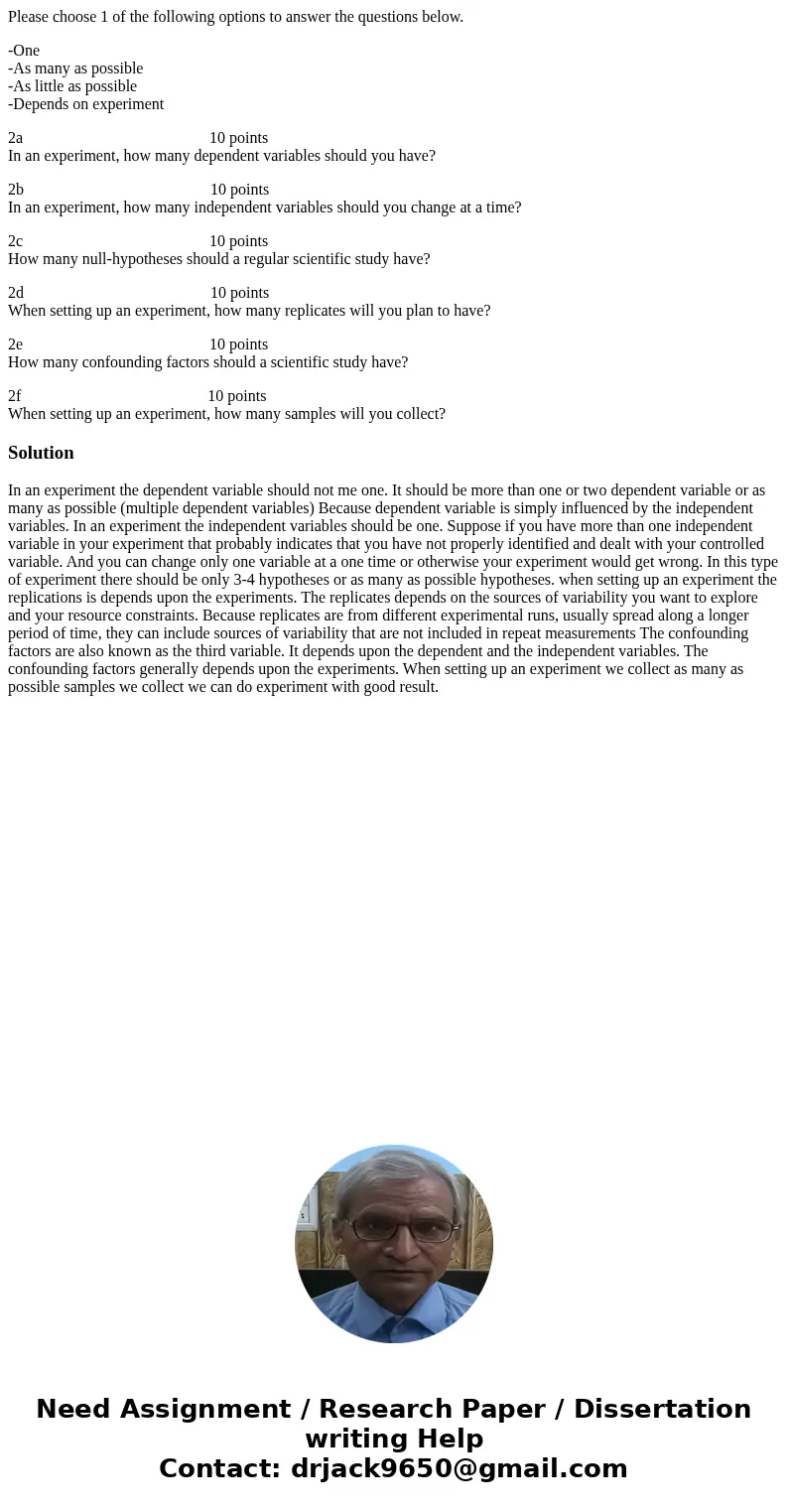Please choose 1 of the following options to answer the quest
Please choose 1 of the following options to answer the questions below.
-One
-As many as possible
-As little as possible
-Depends on experiment
2a 10 points
In an experiment, how many dependent variables should you have?
2b 10 points
In an experiment, how many independent variables should you change at a time?
2c 10 points
How many null-hypotheses should a regular scientific study have?
2d 10 points
When setting up an experiment, how many replicates will you plan to have?
2e 10 points
How many confounding factors should a scientific study have?
2f 10 points
When setting up an experiment, how many samples will you collect?
Solution
In an experiment the dependent variable should not me one. It should be more than one or two dependent variable or as many as possible (multiple dependent variables) Because dependent variable is simply influenced by the independent variables. In an experiment the independent variables should be one. Suppose if you have more than one independent variable in your experiment that probably indicates that you have not properly identified and dealt with your controlled variable. And you can change only one variable at a one time or otherwise your experiment would get wrong. In this type of experiment there should be only 3-4 hypotheses or as many as possible hypotheses. when setting up an experiment the replications is depends upon the experiments. The replicates depends on the sources of variability you want to explore and your resource constraints. Because replicates are from different experimental runs, usually spread along a longer period of time, they can include sources of variability that are not included in repeat measurements The confounding factors are also known as the third variable. It depends upon the dependent and the independent variables. The confounding factors generally depends upon the experiments. When setting up an experiment we collect as many as possible samples we collect we can do experiment with good result.
 Homework Sourse
Homework Sourse